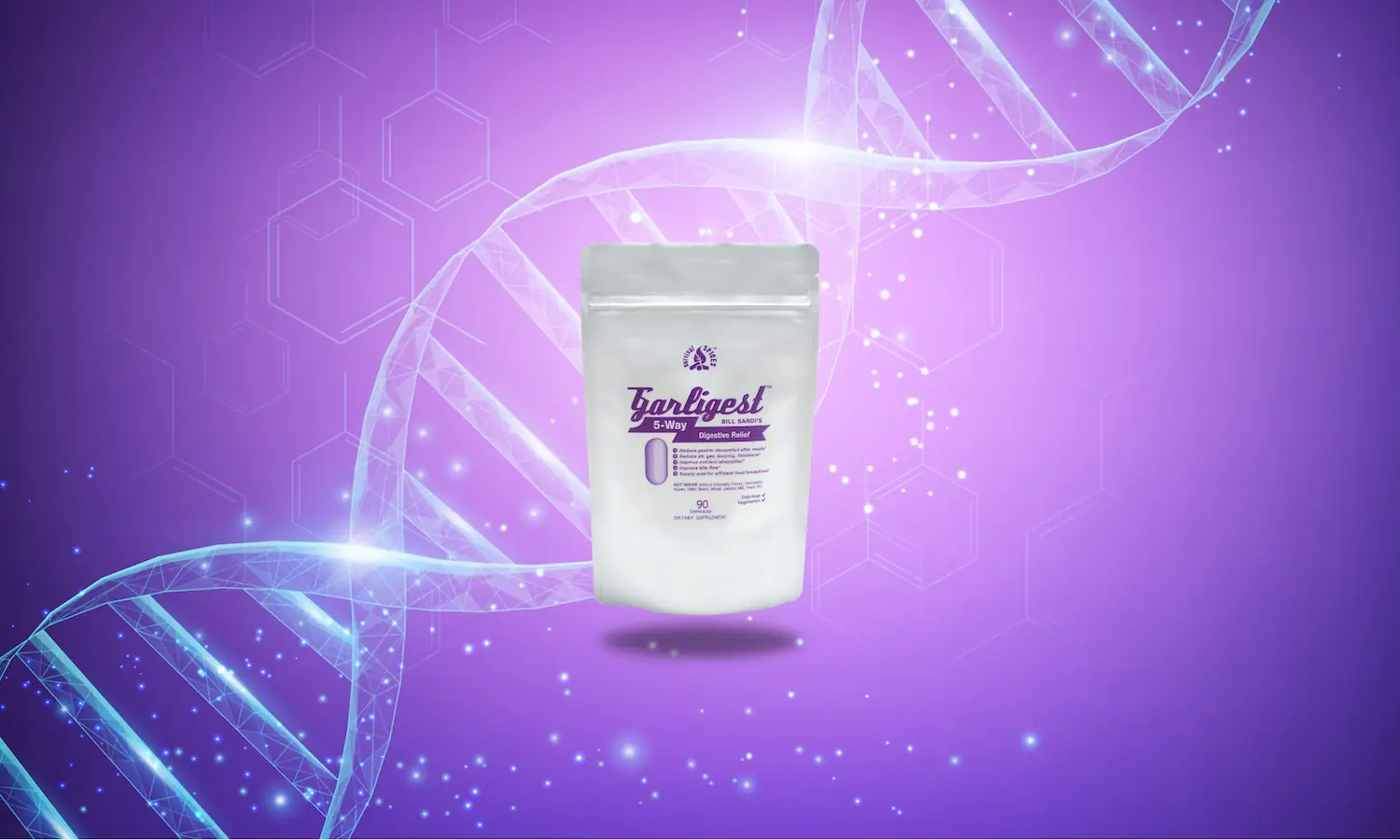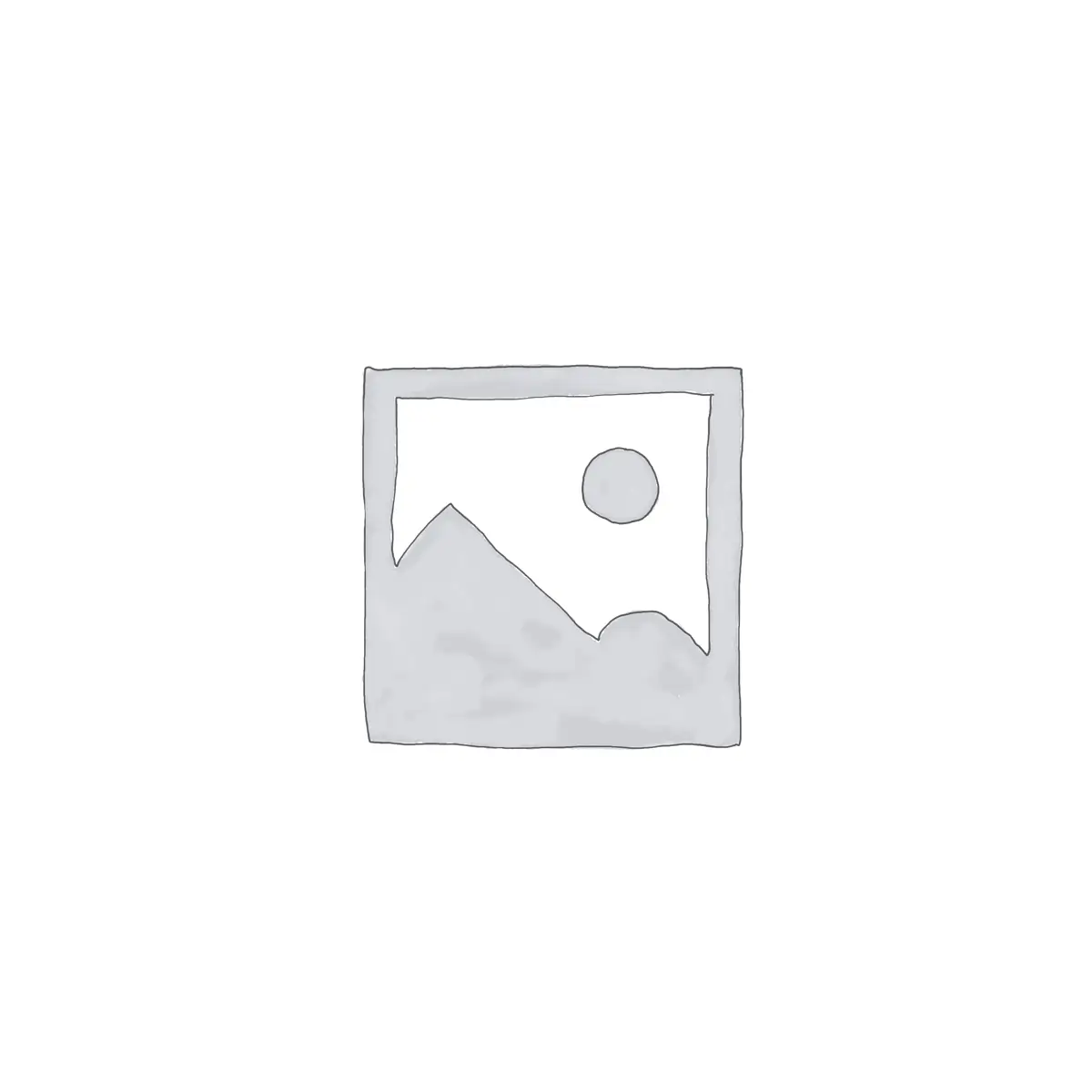by William Clearfield, D.O. for Longevinex
As we find ourselves in the heart of winter, the dramatic shift in our environment and daylight hours does more than prompt us to bundle up; it profoundly impacts our mental health. Seasonal Affective Disorder (S.A.D), a type of depression that emerges in the colder, darker months, begins to take hold, affecting our daily lives.
Triggered by the reduced light of winter, shifts in our circadian rhythms, and changes in melatonin and serotonin levels, S.A.D brings about a significant seasonal swing in our mood and outlook. Living far from the equator, where daylight hours are shortest, exacerbates the risk, making understanding and addressing S.A.D crucial during this time of year.
What is Seasonal Affective Disorder?
A mood disorder in which one experiences depression during the winter months, S.A.D is present when one experiences low mood, lack of energy, increased need for sleep, and cravings for carbohydrates.[2] Symptoms are milder than major depression but can be severe enough to impair activities of daily living.[3] Most people with S.A.D experience symptom relief in spring or summer once sunlight exposure increases.
Why Does S.A.D Occur?
Warning: Science Alert!
Melatonin, a hormone the pineal gland produces, regulates our sleep-wake cycle. In the absence of light, we produce more melatonin. Melatonin makes us sleepy. In winter, with short days and decreased sun exposure, melatonin levels rise in the early afternoon rather than later in the evening in the summertime, leading to fatigue, low energy, and depression.[4]
Serotonin, also light-sensitive, is a mood-stabilizing neurotransmitter involved in joyful, energetic, and motivating emotions. Less natural light in winter reduces serotonin levels, triggering symptoms of moodiness and apathy. (5)
Who is Most Vulnerable?
S.A.D is more common the farther one lives from the equator. Living at higher latitudes results in greater shifts in daylight hours between summer and winter. In the United States, 1% of those who live in Florida and 9% who live in Alaska experience S.A.D. In Canada 15% of the population experience winter blues, a milder form of S.A.D, and 2 to 6% experience seasonal affective disorder. In the United Kingdom, 20% experience winter blues, and 2% experience S.A.D.[6]
Due to hormonal fluctuations across the menstrual cycle interacting with melatonin and serotonin, women are four times more likely to experience S.A.D than men. (7) Young adults and middle-aged individuals are most commonly affected.
Genetics also play a role in vulnerability to S.A.D. A family history of seasonal affective disorder is a predisposing factor. (8)
Remedies
Phototherapy
Light is the most effective treatment for S.A.D. (9) Exposure to 30 minutes to two hours of bright light in the morning suppresses melatonin levels, resulting in increased energy and alertness.
Measured in lux (one lumen per square meter), we need to know a sun lamp’s light intensity. A 10,000 lux bright white or blue-enriched lightbox, with a lower (750) lux, is the required brightness for relief. Exposing only your skin to the light is insufficient; your eyes must be open and indirectly exposed to the light. Warning, Will Robinson! Do not look directly at the light. (10)
Besides brightness, eye comfort is also essential for S.A.D lamps. Bright lights are effective, but if they grate on your vision, your light source will go the way of the treadmill you bought during the pandemic. Both can double as clothes hangers when using a dryer is ill-advised.
Glare, measured in lux per square inch, measures the comfort of a particular light source. Glare over 300 lux/sq. inch is uncomfortable. The best S.A.D lamps have glare ratings under 100. (11)
Though usually mild and short-lived, side effects from light therapy include agitation or irritability, headaches, eye strain, sleep disruption, fatigue, and visual changes. To avoid sleep issues, avoid therapy light during the evening hours. (12)
Herbal & Natural Supplements
A handful of supplements help relieve S.A.D symptoms. St. John’s wort, an herbal antidepressant at 900 mg. daily, works similarly to prescription SSRIs Prozac and Zoloft. (13) Omega-3 fatty acids, specifically EPA and DHA found in fatty fish or supplements, aid mood by reducing inflammation. (14) Vitamin D, magnesium, and S-adenosylmethionine (SAMe) also benefit mood and help manage S.A.D. (15-17)
Our favorite supplement, by far, for seasonal affective disorder, Longevinex’s own Garlinex™,
contains the medicinal chemical extracted from garlic, allicin. Allicin significantly decreases stress-related hormones, corticotropin-releasing factor, adrenocorticotropic hormone, corticosterone, and cortisol, diminishing depressive symptoms. (18)
Allicin restores acute restraint stress-induced changes in brain neurotransmitter concentrations (serotonin, norepinephrine, dopamine, and epinephrine) and improves the brain’s antioxidant defense system. In other words, garlic protects the hosts’ mental well-being when in the throws of seasonal affective disorder. (19)
The health effects of garlic, in general, are well known and include:
- Inhibiting the growth of several strains of bacteria, including antibiotic-resistant strains such as methicillin-resistant Staphylococcus aureus (MRSA), without developing the risk of antibiotic resistance. (20)
- Inhibiting the growth of Helicobacter pylori, a bacteria associated with stomach ulcers and gastric cancer. The extract reduces the activity of bacterial enzymes that break down urea, which is necessary for H. pylori survival. (21)
- Promoting cardiovascular health by reducing cholesterol levels, lowering blood pressure, and preventing the formation of blood clots. (22)
- Exhibiting anti-inflammatory activity. (23)
- Acting as an antioxidant. Allicin protects the body from harmful free radicals and reduces oxidative stress associated with chronic diseases. (24)
- Boosting the immune system: Allicin strengthens the immune system, enhances the body’s ability to defend against pathogens, and reduces the frequency of infections. (25)
- Aiding in cancer prevention: Allicin potentially inhibits the growth of cancer cells. (26)
- Improving digestion: Allicin stimulates the production of digestive enzymes and promotes healthy gut microbiota. (27)
- Exhibiting anti-hypertensive effects: Allicin is a natural alternative to pharmaceutical medications to lower blood pressure levels by 10 mm systolic and 8 mm diastolic. Sulfur deficiency plays a part in the etiology of hypertension. Allicin is a sulfur-replacement supplement. (28)
- Possessing Anti-Thrombotic Properties: Allicin inhibits platelet aggregation, preventing the formation of dangerous blood clots that can lead to cardiovascular events like strokes or heart attacks. (29)
- Aiding Respiratory Health: Allicin’s antimicrobial and expectorant properties benefit respiratory health, helping to alleviate symptoms of common respiratory conditions such as colds, coughs, and bronchitis. (30)
- Exhibiting Anti-Diabetic Effects: Allicin assists in regulating blood sugar levels. (31)
- Acting as a natural pain reliever: Allicin possesses analgesic properties to alleviate pain associated with conditions such as toothaches and sore throats. (32)
- Improving skin health: Allicin’s antimicrobial and anti-inflammatory effects improve skin health by combating acne-causing bacteria and reducing inflammation. (33)
- Supporting Weight Management: Allicin supports weight loss by increasing metabolism and promoting fat burning. (34)
- Being neuroprotective: Allicin has neuroprotective properties, potentially benefiting cognitive function and reducing the risk of neurodegenerative diseases like Alzheimer’s. (35)
Side effects of garlic include breath and body odor, dizziness, nausea, and upset stomach. (36)
Lifestyle Remedies Include: (37)
- Increase sun exposure by spending mid-day hours outdoors
- Increase endorphin release to boost mood via exercise
- Limit alcohol, caffeine, and sugar
- Practice relaxation techniques (Examples include yoga, tai chi, meditation, or deep breathing.
- Use a sun lamp with a 10,000 lux white or 750 lux blue frequency for 30 minutes to two hours daily. The glare ratio should be less than 300.
- Talk to family/friends or see a therapist if feelings of isolation or sadness persist.
Conclusion
Seasonal affective disorder is a biologically-based winter depression that impacts millions annually. Light therapy combined with lifestyle modifications, garlic-based supplements, and Vitamin D provides safe and effective relief without pharmaceuticals and their side effects.
In more severe or refractory cases, medical interventions, including cognitive behavioral therapy and medication, can ensure a proper diagnosis and treatment of S.A.D. With an understanding of this condition and the remedies available, winter blues are manageable.
xxxx
References
- https://www.mayoclinic.org/diseases-conditions/seasonal-affective-disorder/symptoms-causes/syc-20364651
- https://www.nimh.nih.gov/health/publications/seasonal-affective-disorder#:~:text=If%20you%20have%20noticed%20significant,pattern%20SAD%20or%20winter%20depression.
- https://www.nhs.uk/mental-health/conditions/seasonal-affective-disorder-sad/treatment/
- https://www.psychiatrictimes.com/view/melatonin-dark-side-hormone
- https://www.nimh.nih.gov/health/publications/seasonal-affective-disorder#:~:text=Shorter%20daylight%20hours%20may%20prevent,serotonin%20levels%20in%20the%20winter.
- Melrose S. Seasonal Affective Disorder: An Overview of Assessment and Treatment Approaches. Depress Res Treat. 2015;2015:178564. doi: 10.1155/2015/178564. Epub 2015 Nov 25. PMID: 26688752; PMCID: PMC4673349.
- Rosenthal N. What is seasonal affective disorder? Answers from the doctor who first described the condition. Dr. Rosenthal’s personal website, http://www.normanrosenthal.com/seasonal-affective-disorder/
- Alshaya DS. Genetic and epigenetic factors associated with depression: An updated overview. Saudi J Biol Sci. 2022 Aug;29(8):103311. doi: 10.1016/j.sjbs.2022.103311. Epub 2022 May 20. PMID: 35762011; PMCID: PMC9232544.
- https://www.nhs.uk/mental-health/conditions/seasonal-affective-disorder-sad/treatment/#:~:text=more%20about%20antidepressants-,Light%20therapy,lamps%20and%20wall%2Dmounted%20fixtures.
- https://optimizeyourbiology.com/best-sad-light-therapy-lamps
- Meesters Y, Dekker V, Schlangen LJ, Bos EH, Ruiter MJ. Low-intensity blue-enriched white light (750 lux) and standard bright light (10,000 lux) are equally effective in treating SAD. A randomized controlled study. BMC Psychiatry. 2011 Jan 28;11:17. doi: 10.1186/1471-244X-11-17. PMID: 21276222; PMCID: PMC3042929.
- Terman M, Terman JS. Bright light therapy: side effects and benefits across the symptom spectrum. J Clin Psychiatry. 1999 Nov;60(11):799-808; quiz 809. PMID: 10584776.
- Wheatley D. Hypericum in seasonal affective disorder (SAD). Curr Med Res Opin. 1999;15(1):33-7. doi: 10.1185/03007999909115171. PMID: 10216809.
- https://nuscimagazine.com/fishing-for-happiness-omega-3-and-seasonal-affective-disorder/
- https://www.nccih.nih.gov/health/seasonal-affective-disorder#:~:text=Low%20levels%20of%20vitamin%20D,than%20vitamin%20D%20for%20SAD.
- Eby GA, Eby KL. Rapid recovery from major depression using magnesium treatment. Med Hypotheses. 2006;67(2):362-70. doi: 10.1016/j.mehy.2006.01.047. Epub 2006 Mar 20. PMID: 16542786.
- https://www.pharmacytimes.com/view/5-dietary-supplements-for-seasonal-affective-disorder
- Hwang KA, Hwang YJ, Hwang IG, Song J, Jun Kim Y. Low temperature-aged garlic extract suppresses psychological stress by modulation of stress hormones and oxidative stress response in brain. J Chin Med Assoc. 2019 Mar;82(3):191-195. doi: 10.1097/JCMA.0000000000000028. PMID: 30908412.
- Nadeem MS, Kazmi I, Ullah I, Muhammad K, Anwar F. Allicin, an Antioxidant and Neuroprotective Agent, Ameliorates Cognitive Impairment. Antioxidants (Basel). 2021 Dec 30;11(1):87. doi: 10.3390/antiox11010087. PMID: 35052591; PMCID: PMC8772758.
- Choo S, Chin VK, Wong EH, et al. Review: antimicrobial properties of allicin used alone or in combination with other medications. Folia Microbiol (Praha). 2020;65(3):451-465. doi:10.1007/s12223-020-00786-5
- Gowsala P. Sivam, Protection against Helicobacter pylori and Other Bacterial Infections by Garlic, The Journal of Nutrition, Volume 131, Issue 3, 2001, Pages 1106S-1108S, ISSN 0022-3166, https://doi.org/10.1093/jn/131.3.1106S.
- Banerjee SK, Maulik SK. Effect of garlic on cardiovascular disorders: a review. Nutr J. 2002 Nov 19;1:4. doi: 10.1186/1475-2891-1-4. PMID: 12537594; PMCID: PMC139960.
- Lee DY, Li H, Lim HJ, Lee HJ, Jeon R, Ryu JH. Anti-inflammatory activity of sulfur-containing compounds from garlic. J Med Food. 2012 Nov;15(11):992-9. doi: 10.1089/jmf.2012.2275. Epub 2012 Oct 11. PMID: 23057778; PMCID: PMC3491620.
- Jang HJ, Lee HJ, Yoon DK, Ji DS, Kim JH, Lee CH. Antioxidant and antimicrobial activities of fresh garlic and aged garlic by-products extracted with different solvents. Food Sci Biotechnol. 2017 Dec 12;27(1):219-225. doi: 10.1007/s10068-017-0246-4. PMID: 30263743; PMCID: PMC6049750.
- Iddir M, Brito A, Dingeo G, Fernandez Del Campo SS, Samouda H, La Frano MR, Bohn T. Strengthening the Immune System and Reducing Inflammation and Oxidative Stress through Diet and Nutrition: Considerations during the COVID-19 Crisis. Nutrients. 2020 May 27;12(6):1562. doi: 10.3390/nu12061562. PMID: 32471251; PMCID: PMC7352291.
- Zhou Y, Li X, Luo W, Zhu J, Zhao J, Wang M, Sang L, Chang B, Wang B. Allicin in Digestive System Cancer: From Biological Effects to Clinical Treatment. Front Pharmacol. 2022 Jun 13;13:903259. doi: 10.3389/fphar.2022.903259. PMID: 35770084; PMCID: PMC9234177.
- Chen K, Xie K, Liu Z, Nakasone Y, Sakao K, Hossain A, Hou DX. Preventive Effects and Mechanisms of Garlic on Dyslipidemia and Gut Microbiome Dysbiosis. Nutrients. 2019 May 29;11(6):1225. doi: 10.3390/nu11061225. PMID: 31146458; PMCID: PMC6627858.
- Ried K, Frank OR, Stocks NP, Fakler P, Sullivan T. Effect of garlic on blood pressure: a systematic review and meta-analysis. BMC Cardiovasc Disord. 2008 Jun 16;8:13. doi: 10.1186/1471-2261-8-13. PMID: 18554422; PMCID: PMC2442048.
- Fakhar H, Hashemi Tayer A. Effect of the Garlic Pill in comparison with Plavix on Platelet Aggregation and Bleeding Time. Iran J Ped Hematol Oncol. 2012;2(4):146-52. Epub 2012 Sep 22. PMID: 24575255; PMCID: PMC3915434.
- Mammari N, Albert Q, Devocelle M, Kenda M, Kočevar Glavač N, Sollner Dolenc M, Mercolini L, Tóth J, Milan N, Czigle S, Varbanov M, On Behalf Of The Oemonom. Natural Products for the Prevention and Treatment of Common Cold and Viral Respiratory Infections. Pharmaceuticals (Basel). 2023 Apr 28;16(5):662. doi: 10.3390/ph16050662. PMID: 37242445; PMCID: PMC10220542.
- Mammari N, Albert Q, Devocelle M, Kenda M, Kočevar Glavač N, Sollner Dolenc M, Mercolini L, Tóth J, Milan N, Czigle S, Varbanov M, On Behalf Of The Oemonom. Natural Products for the Prevention and Treatment of Common Cold and Viral Respiratory Infections. Pharmaceuticals (Basel). 2023 Apr 28;16(5):662. doi: 10.3390/ph16050662. PMID: 37242445; PMCID: PMC10220542.
- Mammari, N.; Albert, Q.; Devocelle, M.; Kenda, M.; Kočevar Glavač, N.; Sollner Dolenc, M.; Mercolini, L.; Tóth, J.; Milan, N.; Czigle, S.; et al. Natural Products for the Prevention and Treatment of Common Cold and Viral Respiratory Infections. Pharmaceuticals 2023, 16, 662. https://doi.org/10.3390/ph16050662
- Jung H, Lee JS, Lee JJ, Park HS. Anti-inflammatory and Anti-bacterial Effects of Allicin-coated Tracheal Tube on Trachea Mucosa. In Vivo. 2022 May-Jun;36(3):1195-1202. doi: 10.21873/invivo.12819. PMID: 35478119; PMCID: PMC9087065.
- Shi X, Zhou X, Chu X, Wang J, Xie B, Ge J, Guo Y, Li X, Yang G. Allicin Improves Metabolism in High-Fat Diet-Induced Obese Mice by Modulating the Gut Microbiota. Nutrients. 2019 Dec 2;11(12):2909. doi: 10.3390/nu11122909. PMID: 31810206; PMCID: PMC6949904.
- Tedeschi P, Nigro M, Travagli A, Catani M, Cavazzini A, Merighi S, Gessi S. Therapeutic Potential of Allicin and Aged Garlic Extract in Alzheimer’s Disease. Int J Mol Sci. 2022 Jun 22;23(13):6950. doi: 10.3390/ijms23136950. PMID: 35805955; PMCID: PMC9266652.
- https://www.nccih.nih.gov/health/garlic
- https://www.nimh.nih.gov/health/publications/seasonal-affective-disorder
- Chu A, Wadhwa R. Selective Serotonin Reuptake Inhibitors. [Updated 2023 May 1]. In: StatPearls [Internet]. Treasure Island (FL): StatPearls Publishing; 2024 Jan-. Available from: https://www.ncbi.nlm.nih.gov/books/NBK554406/
Share
Polycystic ovary syndrome (PCOS) is the most common endocrine disorder in women of reproductive age. (1) Affecting 4-10% of the adult female population, PCOS is defined as exhibiting two of the following three entities: oligo […]
Western processed food diets produce many imbalances that promote chronic disease and premature death. This is well documented in the medical literature. At the risk of oversimplification, a list of these imbalances can be summarized […]






